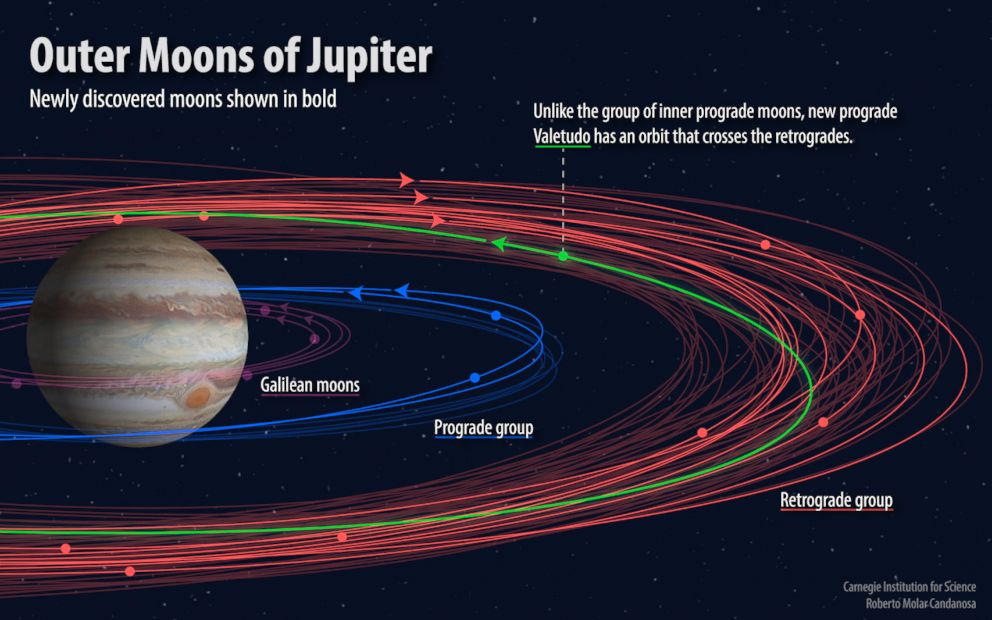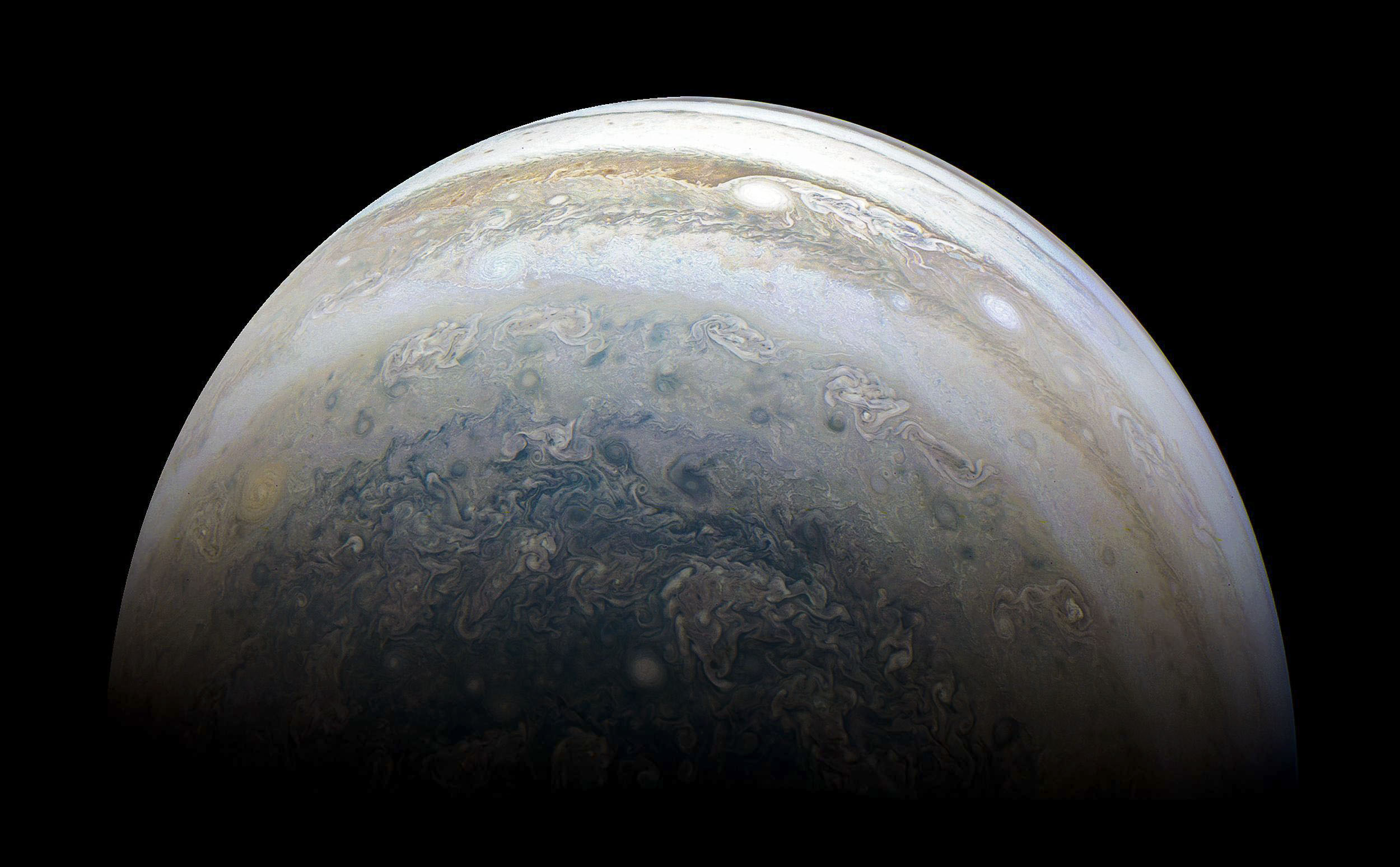Jupiter has 12 new moons, 79 total in orbit: Scientists
There are 11 retrograde moons and an “oddball," scientists say.
A dozen new moons have been found orbiting Jupiter, including 11 normal moons and one "oddball" moon, according to Carnegie Institution for Science.
The new discovery brings Jupiter’s total number of moons to 79, the highest of any planet in solar system, the institute said in a statement.
A group of scientists, led by Scott S. Sheppard, first spotted the moons in 2017 while they were searching for very distant Solar System objects that could be possible massive planet far beyond Pluto, the statement read.

"Understanding these moons helps us understand what the planets were originally made from," Sheppard told ABC News via email, adding that the moons are "likely half ice and half rock."
The oddball moon, which they named Valetudo, was captured in the opposite direction from the retrograde moons.

"Valetudo is like driving down the highway on the wrong side of the road. That is, it is moving prograde while all the other objects at a similar distance from Jupiter are moving retrograde. Thus head-on collisions are likely," Sheppard said. "Valetudo likely has collided with some of the retrograde moons in the past and what we see today is the last remnant of a once much larger moon that has none been ground to dust from collisions in the past."
He believes that there may be more astronomical secrets found near the large planet.
"We think there are more moon fragments yet to be found around Jupiter," Sheppard said, "but technology will need to get better for us to find them."
The observations to confirm the objects actually orbits around Jupiter took about a year, according to Gareth Williams at the International Astronomical Union’s Minor Planet Center. The center used the Carnegie insitute's observations to calculate the orbits of the newly found moons.
"Nine of the new moons are part of a distant outer swarm of moons that orbit it in the retrograde, or opposite direction of Jupiter’s spin rotation," the statement said. "These distant retrograde moons are grouped into at least three distinct orbital groupings and are thought to be the remnants of three once-larger parent bodies that broke apart during collisions with asteroids, comets, or other moons."
The newly-discovered retrograde moons are estimated to take about two years to orbit Jupiter.
"Several space agencies are sending spacecraft to Jupiter in the next decade," Sheppard said. "It is likely one of these spacecraft will fly by one of these distant Jupiter moons to get a close-up view."
When that happens, he said, many more questions may be answered.
"What is the original material that built the planets?" Sheppard said. "That is what we are trying to answer."





